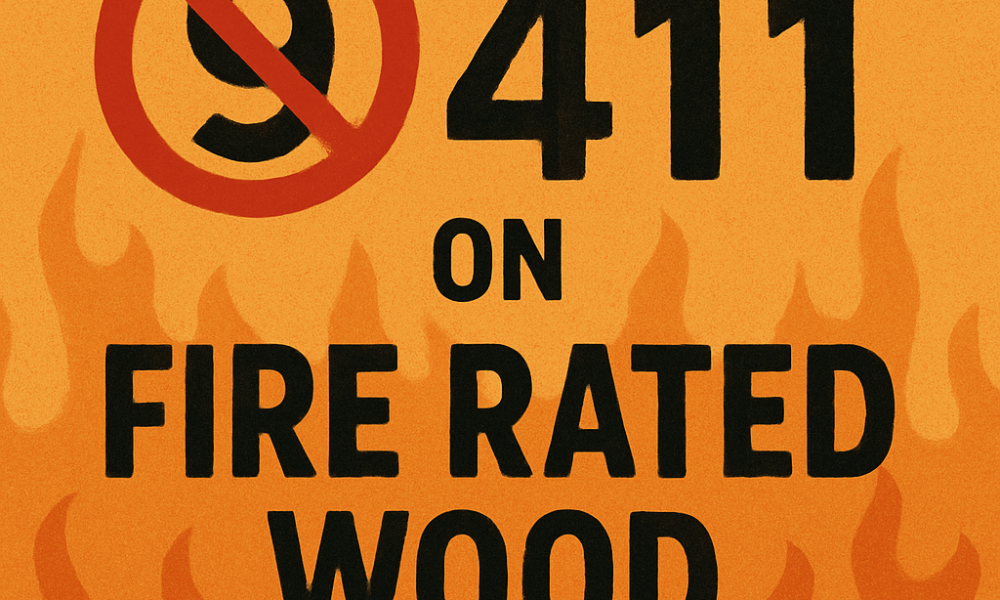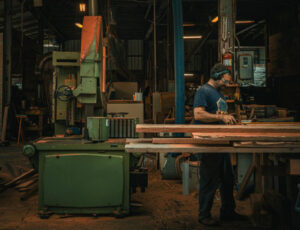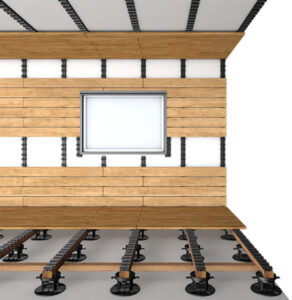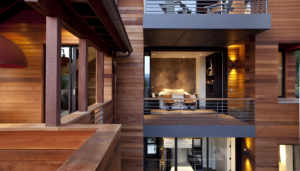Why Fire-Treated Wood Matters
Building codes and design preferences are evolving as fire risks continue to climb, particularly in wildland-urban interface zones. Today’s contractors, architects, and builders seek ways to balance aesthetic impact with performance and safety. For high-end projects that rely on natural materials like large timbers, specialty woods, and exposed structural elements, fire protection is no longer a nice-to-have—it’s essential.
Fortunately, fire-retardant solutions are available that preserve the integrity and beauty of premium wood products — from code-compliant timbers to eye-catching interior hardwoods; fire-treated wood bridges the gap between safety and style.
What Is Fire-Rated Wood?
Fire-rated (or fire-retardant) wood is lumber that has been chemically treated to slow the spread of flames and reduce smoke development during a fire. It is a critical component in assemblies that require stringent fire-resistance ratings, particularly in commercial or public spaces.
It’s essential to note that fire-rated wood does not mean fireproof. Fire-rated wood is engineered to delay ignition, offering critical protection — time for occupants to evacuate a structure and for emergency personnel to respond, which significantly impacts life safety and structural preservation.
Fire-Retardant Wood Benefits
Fire-retardant wood provides essential benefits to safety and style. Below, we’ve listed the most necessary items for building professionals.
- Code Compliance
Fire-rated lumber often meets ASTM E84 or other relevant standards, helping builders and designers check the right boxes for local and national building codes, especially in areas prone to fire.
- Safety Enhancement
By slowing ignition and flame spread, fire-treated wood provides critical fire resistance in residential and commercial settings. It’s a straightforward way to improve life safety without compromising design goals.
- Design Flexibility
Architects don’t need to choose between aesthetics and performance. Many treatment methods maintain the appearance and texture of natural wood, allowing premium species and specialty cuts to shine in fire-sensitive applications.
- Cost-Effective vs. Alternatives
Compared to non-combustible substitutes such as metal or concrete, fire-rated wood provides a more economical path to compliance, particularly for projects that prioritize natural finishes.
- Sustainability
When sourced from responsibly managed forests, treated wood can contribute to sustainable building practices. Fire treatment extends the lifespan of wood in fire-prone areas, reducing the need for future replacements. At Issaquah Lumber, we are a registered Group Chain of Custody supplier, ensuring that forest-based materials are reliably used throughout the product’s journey from the forest to finished goods.
How Fire Treatment Works
Fire-retardant treatments change how wood responds to high heat, which helps slow ignition, reduce flame spread, and limit smoke production. These treatments usually fall into two categories, each suited to different wood types, applications, and performance goals.
- Pressure-Impregnated Treatments
Pressure-impregnation is the most common method of fire treatment. It infuses the fire-retardant chemicals into the wood’s cell structure. This method is ideal for structural components such as beams, posts, and turned poles, especially those made from Douglas fir, cedar, and other domestic softwoods. Issaquah Lumber offers a variety of pressure-treatable options using this method.
- Surface-Applied Coatings
Surface-applied fire-retardant coatings provide a clear or tinted finish for high-visibility applications where color and grain must remain untouched. These coatings are particularly effective for interior hardwoods or decorative elements. Although they may need reapplication over time, they offer design flexibility without compromising safety.
Factory vs. Field Treatments
To ensure code compliance, preserve aesthetic goals, and avoid costly mistakes within a construction timeline, it is important to understand the differences between factory-applied and field-applied treatments — not all methods are created equal.
- Factory-Applied
Factory-applied fire treatments provide consistency, performance, and certification. Many are UL- or ICC-verified and comply with strict third-party testing requirements. These are ideal for structural assemblies and projects where code documentation is crucial.
- Field-Applied
Field-applied coatings can provide some flexibility for one-off installations, such as a rare exotic hardwood feature wall. However, they often lack formal certification and should not be relied upon alone for code-required assemblies.
What Can Be Treated?
Not every species or type of wood is compatible with fire treatment. Here’s a quick guide to help you determine what can and cannot be done:
- Large Timbers: Douglas fir, cedar, and many others are commonly pressure-treated.
- Exotic Hardwoods: Some can be treated, but this depends on density, oil content, and intended use.
- Thermally Modified and Acetylated Woods: Fire treatment compatibility varies; consult the supplier or treatment provider for details.
- Custom Turned Poles: Many can be pressure-treated, especially those made from softwoods.
- Domestic Softwoods: Widely accepted and often treated with proven results.
Key Considerations for Specifiers
When selecting fire-rated wood for your next project, consider:
- Species Compatibility: Not all woods absorb treatment equally; choose species known to perform well.
- Code Acceptance: To meet the required fire rating of the assembly, ensure the treatment method is approved in your jurisdiction.
- Aesthetic Goals: Color or texture may change with some treatments while others will maintain clarity and grain.
- Long-Term Performance: Consider exposure, maintenance cycles, and whether the application is for interior or exterior use.
Final Takeaway
Fire safety and premium wood products are no longer separate. Today’s treatments allow for the creation of safer spaces without compromising the natural beauty and design impact of wood.
Issaquah Lumber collaborates with trusted treatment partners and provides a variety of fire-rated wood solutions, allowing you to specify with confidence, meet code requirements, and deliver exceptional results.








